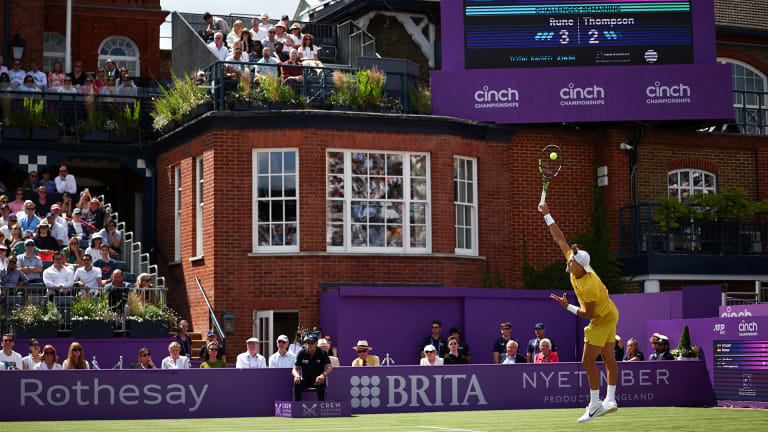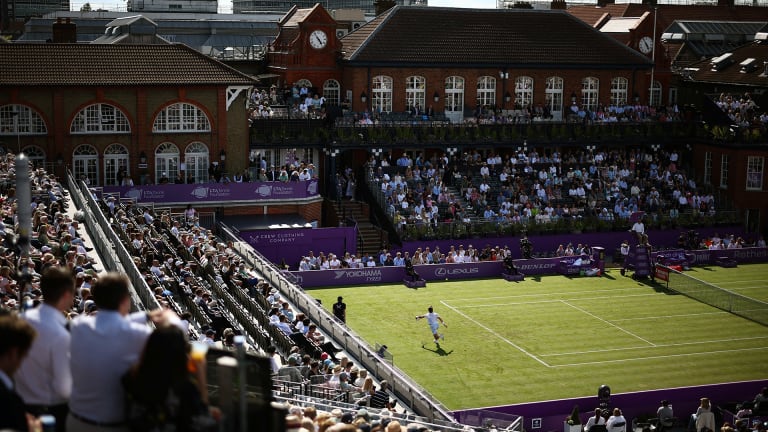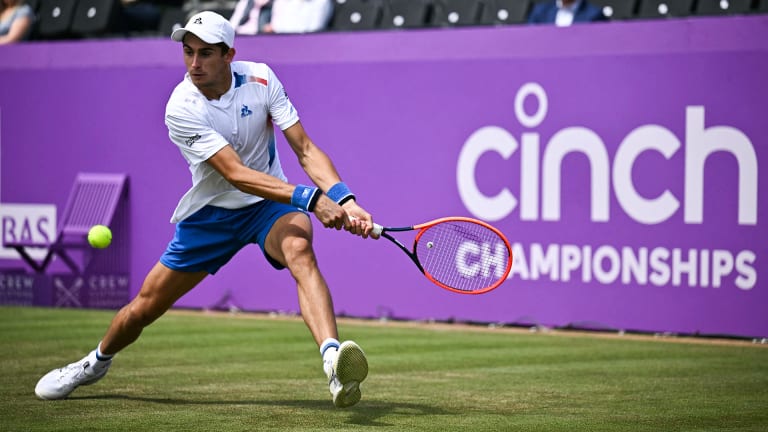When two-time Stuttgart champion Matteo Berrettini packed up his racquets after reaching the BOSS Open final on Sunday, he stayed in Germany to continue his grass-court season in Halle, at the Terra Wortmann Open.
It was a move that raised a few eyebrows because it meant the Italian wouldn’t be playing at Queen’s Club in London, where he’s twice been champion—first in 2021, the same year he reached the Wimbledon final. But it was also notable because it meant Berrettini joined a growing wave of top players who are completing their Wimbledon warm-up away from the United Kingdom, opting for tournaments in Germany (Berlin, Bad Homburg, Halle), the Netherlands (‘s-Hertogenbosch) and Spain (Mallorca)—while draws in Nottingham, London and Eastbourne struggle to attract global stars.
The cinch Championships at Queen’s Club may be the best example of this trend. Despite being just a half-hour’s drive from Wimbledon, the ATP 500-level tournament featured just two Top 10 representatives, Carlos Alcaraz and Grigor Dimitrov. By contrast, the entry list at Halle is loaded with stars, featuring six Top 10 players including world No. 1 Jannik Sinner, Daniil Medvedev and Stefanos Tsitsipas.
Read More: Wimbledon prize money is increasing to a record 50 million pounds, or about $64 million USD
This gulf in star power is apparent on the WTA Tour as well. Only three Top 10 players will hit the lawns in England at all this summer, with Ons Jabeur competing in Nottingham last week and Elena Rybakina and Jessica Pegula both scheduled for Eastbourne next week. The rest, including megastar and former No. 1 Naomi Osaka, are competing abroad.
What’s behind this great British drop-off? Though the country has historically been associated with lawn tennis and the grass-court season, international athletes have been avoiding the UK for years—thanks in large part to the country’s uniquely overreaching tax system.


